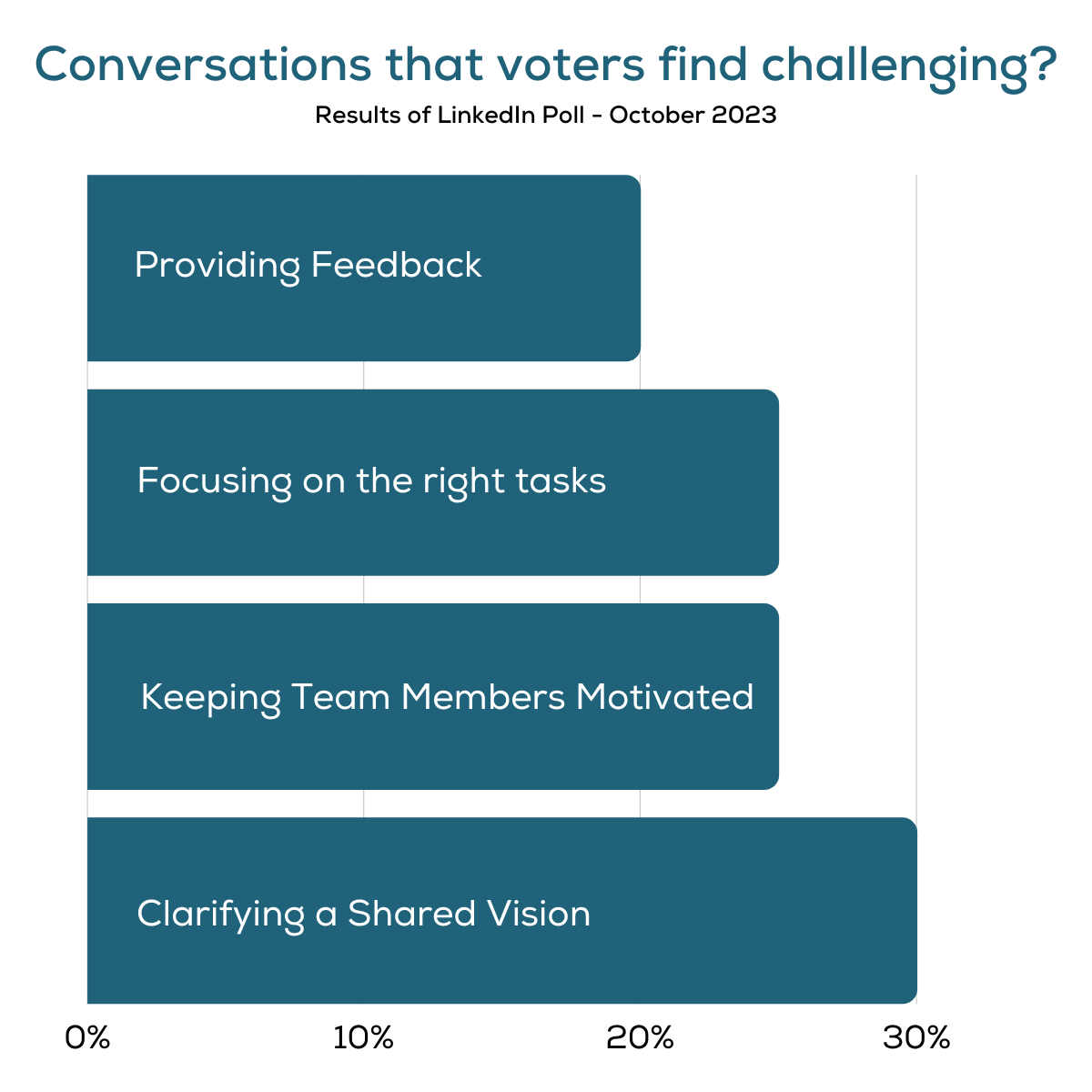
Transform Tough Talks into Sage Conversations
It all started with my LinkedIn poll, asking which type of workplace conversation ranks the most challenging. The results are shown in the picture above.
The importance of clarifying a shared vision, keeping team members motivated, focusing on the right tasks, and providing feedback, are all critical to the health of an organization. When done well, they are rewarding and energizing.
Yet, these conversations are not always done well.
I believe there are 2 reasons why leaders avoid conversations or don’t feel satisfied with the results.
- Limited Beliefs. Leaders have an expectation that the conversation is going to be tough. You may have experienced that conversations are:
- Time consuming. There are so many urgencies in a typical day, that the time it takes to have a good conversation feels luxurious. More important tasks come first, and communication is at the end of the list.
- Contentious. There are differences of opinions, and getting to a consensus seems out of reach. It is taxing and disruptive. It feels more efficient to send a memo with the decision.
- Personality clashes. The perspective or opinions taken by some are barriers to discourse. It takes too much energy to discuss a strategy or debate an action with someone who is contrary, or wants more details before discussing options, or they are a stickler for how things must be handled, to name a few.
The above points are limiting beliefs to which Leaders, and people in general, hold on. Expecting conversations to be tough for any reason, puts into motion a self-fulfilling prophesy. There is a plethora of books written every year about challenging communication. (see list in box below) Judging by their titles, they come at the topic from the perspective of what is hard or unpleasant; perpetuating the ‘belief’ and expectation that conversations are difficult.
- Lack of knowledge. The ability to communicate is left to chance. We learn by watching others and measuring our own practice. Yet, our experience has not provided a consistent, successful practice of engaging in good conversations. For example, a mantra of an organization I worked in was simply: communicate, communicate, communicate. Yet they did not provide any guidance or insights into what could derail communication, only to communicate often and on multiple platforms. Without tools we tend to repeat what we have always done or copy what we see. When that doesn’t work, we remain stuck, and we get what we have always gotten.
In coaching sessions with leaders, I often hear a detailed recounting of what they said to a particular Team Member. They are articulate about what they want their employees to know and do. But when I question them about what their employee said back, they are quiet. They had not asked what their employee thought about the situation/problem, nor even to confirm if their employee understood what they said. They only seem to be able to recount their side of the dialogue, or should I say their monologue.
What is the cure to avoiding ‘difficult’ conversations?
- Curiosity. Change your expectations that the conversation will be difficult, and approach people with curiosity. Expect that you will learn something new. New perspectives and possibilities arise when you reframe the problem or situation.
- Sage Conversations. Learn the 3 step practice of sage conversations.
In Sage conversations everyone feels heard, understood and their ideas/opinions appreciated.
